Annoyed by bananas? Apples bore to you? Oranges? Berries?
Looking for one of these not-so-local items in your supermarket shop?
If you’re attempting to taste some exotic fruits, travel around the world, or just search for weird and cool facts.
Here are the top 10 weirdest fruits in the world:
10. Budhha’s hand
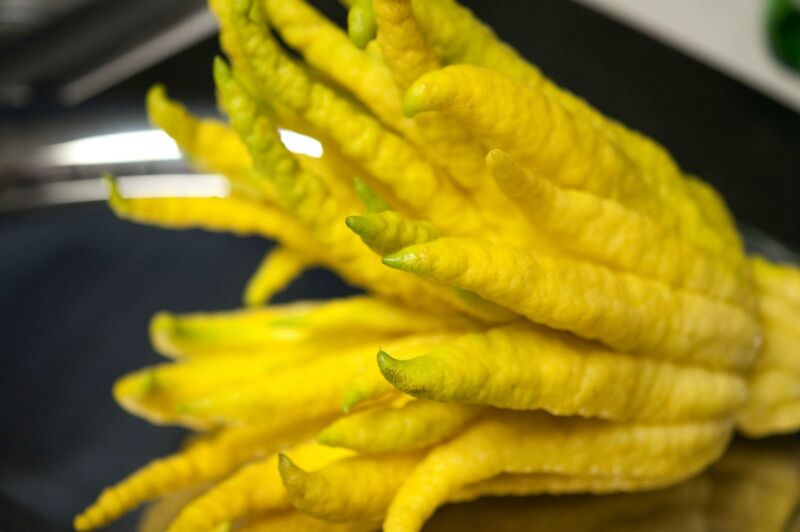
Citrus medica var sarcodactylis, or the fingered citron, is an odd-shaped variant of citron whose fruit is split into finger-like segments, similar to those seen in Buddha depictions.
Origin-
Citron is believed to have originated in the Far East, possibly northeastern India or China, where most citrus fruits are domesticated.
Taste-
It possesses a sweet aroma of citrus blossom and lacks juice or pulp. The mild-tasting pith (skin) is non-bitter, allowing the fruit to be peeled or consumed whole.
9. Markut Lime
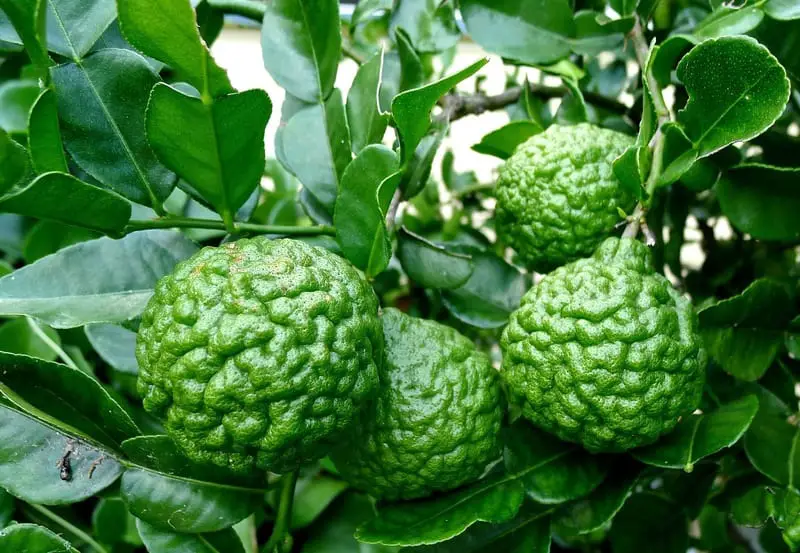
In Southeast Asian cuisine, both the fruit and leaves of the Markut Lime are used.
The essential oil extracted from its rind and crushed leaves emit an intense citrus fragrance used in perfumery.
The leaves are popular in Indonesian, Laotian, Cambodian, and Thai cuisines in Southeast Asia.
Fresh, dried, or frozen leaves are the most often utilized portion of the plant. Thai and Cambodian cuisines make extensive use of the leaves.
In Vietnamese cooking, the leaves of this unique fruit are utilized to enhance the flavor of chicken dishes and neutralize the strong smell of steamed snails.
Origin-
Tropical Southeast Asia and southern China.
Taste-
It can be described as a combining taste of lemon, lime, and sweet orange.
8. Romanesco broccoli
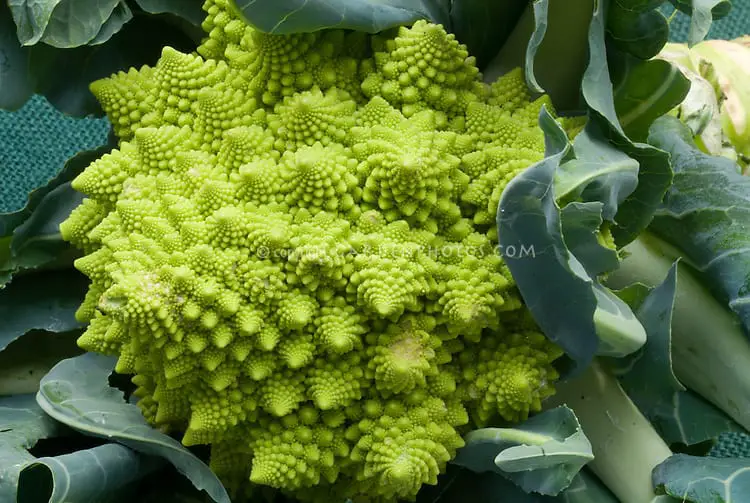
Romanesco broccoli is the species Brassica oleracea’s green flower bud.
It is chartreuse in color, first recorded in Italy. Romanesco has a remarkable look as its shape is a natural impersonation of fractal art.
Origin-
Italy
Taste-
Similar to cauliflower, but with a slightly nuttier, earthier flavor.
7. Pandanus
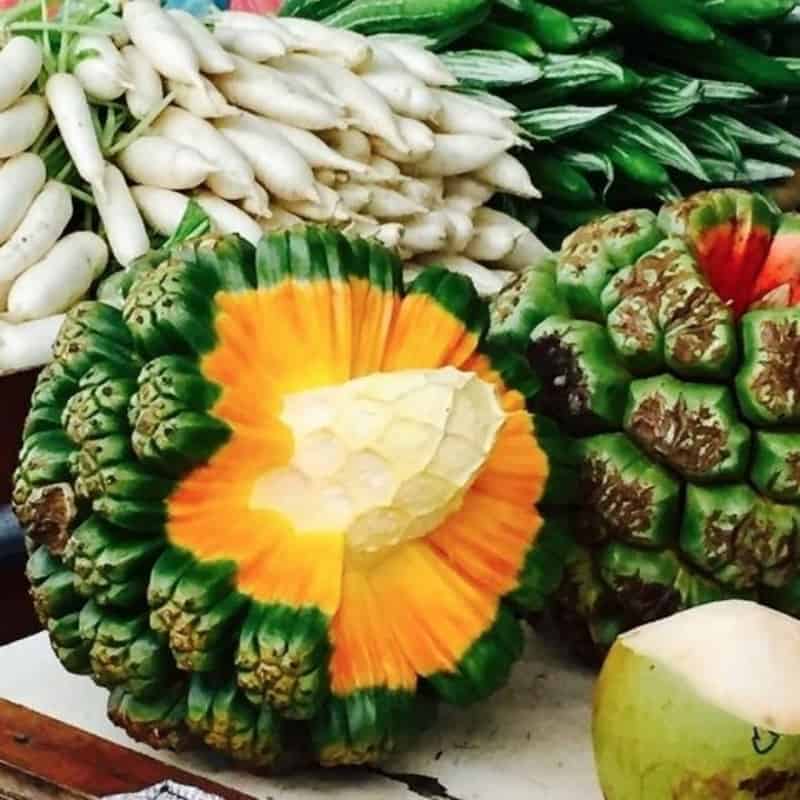
The fruit of Pandanus, also known as the “Hala” fruit, resembles a pineapple on steroids.
This peculiar fruit consists of hundreds of pieces called keys or cones, which are primarily consumed by Pacific Islanders and visitors to the region.
Each cone has a pulpy interior, and the fibrous green outer border can even be used as dental floss.
The raw fruit is chewed, boiled with shredded coconut, or ground into a paste by islanders.
Origin-
Malesia, eastern Australia, and the Pacific Islands
Taste-
It has a sweet pineapplish banana taste when ripe, it produces a foul odor as it ferments, earning it the local nickname “stink nut.”
6. Mangosteen
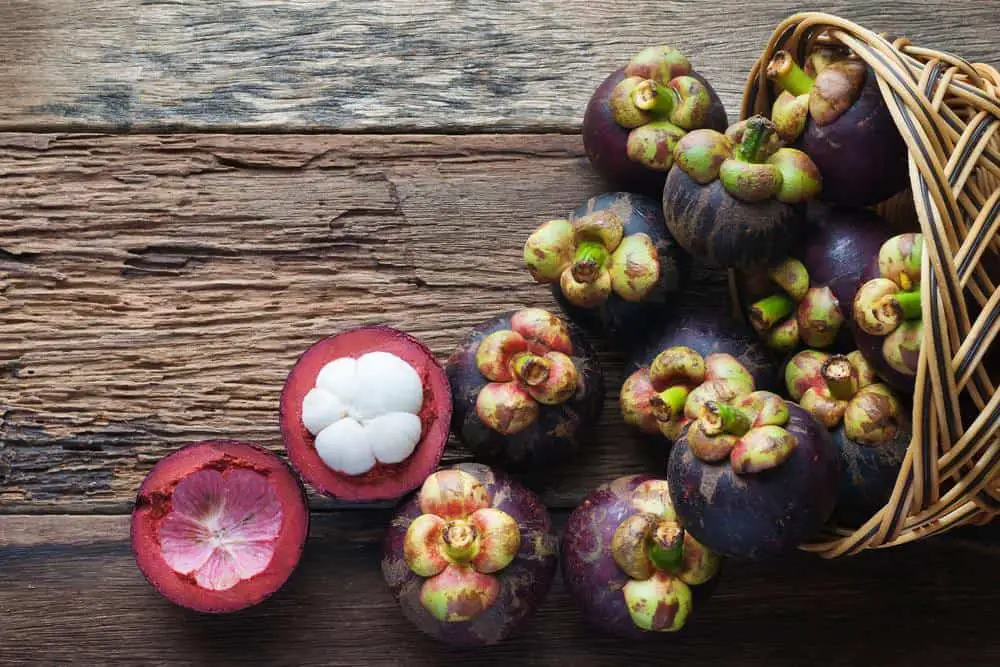
Mangosteen is a plant native to Southeast Asia and is highly esteemed for its juicy, soft texture and mildly sweet and sour taste. It has been cultivated in Malaysia, India, Borneo, Sumatra, Mainland Southeast Asia, and the Philippines since ancient times.
Origin-
Southeast Asia, southwest India and other tropical areas
Taste-
Its sweetish sour and tangy, juicy, somewhat fibrous.
5. Salak
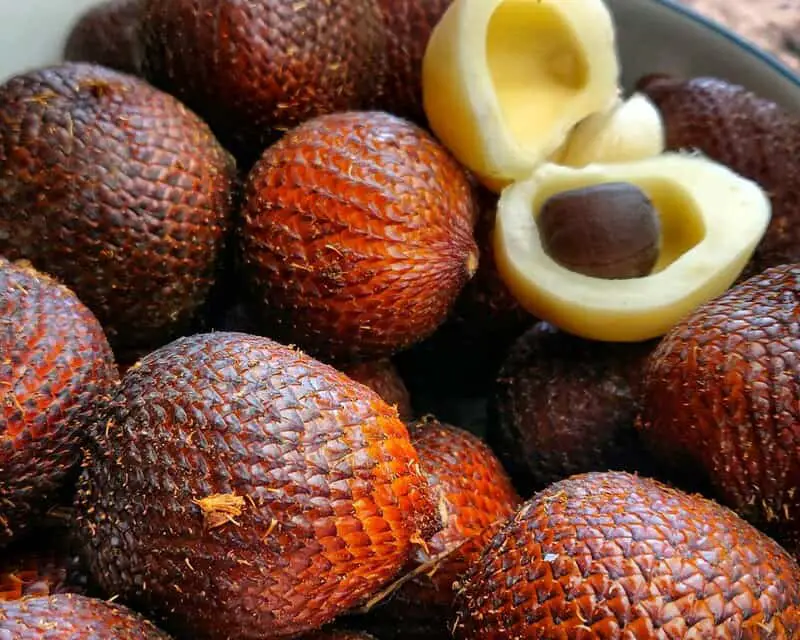
Due to its reddish-brown scaly skin, this fruit is commonly known as snake fruit. It is roughly the size and shape of a tender fig. The pulp of the fruit is edible, and the skin can be easily removed by pinching and sliding it off.
Although its appearance may make it seem like the strangest fruit in the world, taste-wise, it is not that unusual.
Origin-
Indonesia
Taste-
The taste is usually sweet and sour, with a strong bitter flavor, but its apple-like texture can differ from very dry and crisp like guava.
4. Horned Melon
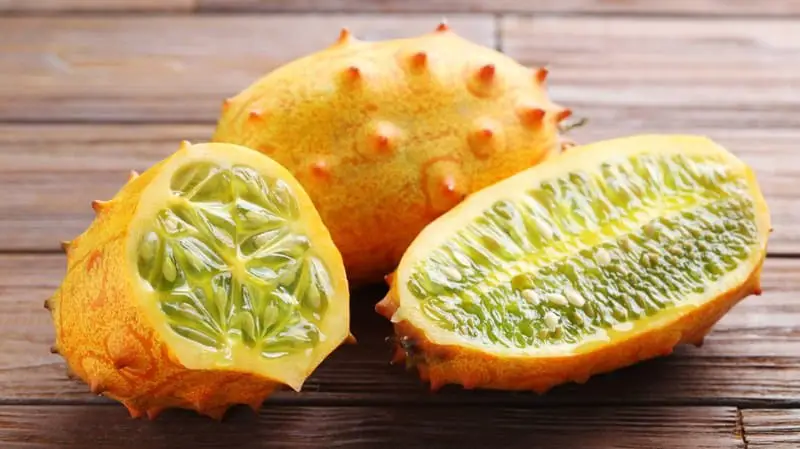
Its fruit has horn-like spines, hence the name “horned melon.” Ripe fruit has orange skin and lime green, jelly-like flesh.
Origin-
Saharan Africa
Taste-
The flavor of the oozy green interior is a hybrid between cucumber, zucchini, and kiwifruit (though as it ripens, it tastes more like a banana).
3. Yellow dragon fruit
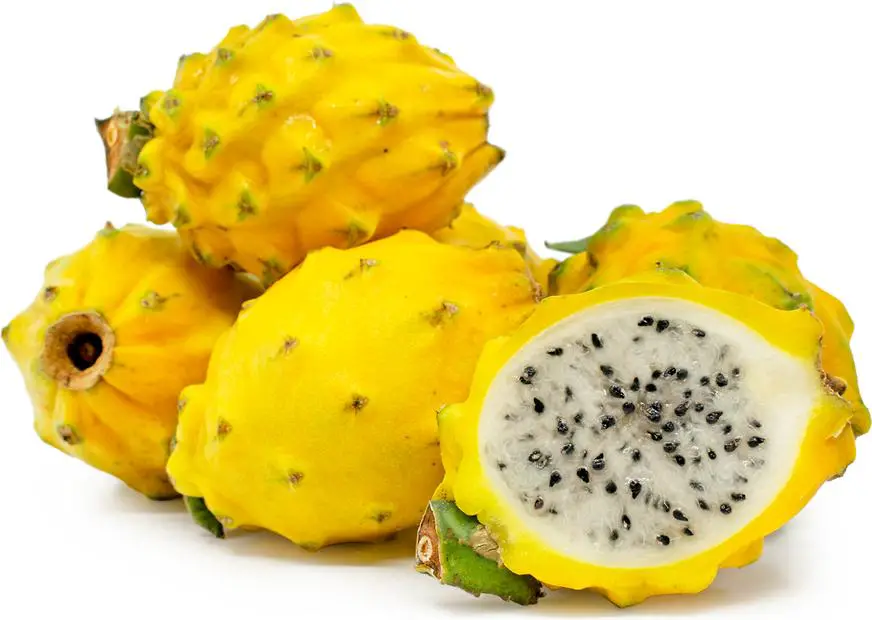
This exotic fruit is related to several unique cactus species native to the Americas. The term “pitaya” generally refers to fruit from the Stenocereus genus, while “pitahaya” or “dragon fruit” refers to fruit from the Hylocereus genus, both belonging to the Cactaceae family.
Origin-
Caribbean
Taste-
Dragonfruit has little taste. In terms of flavor, the best way I can illustrate it is kind of like kiwi.
Not usually very sweet (such as a kiwi). Tend to be more flavorless it has a consistency similar to apple with kiwi seeds inside it.
2. Cupuaçu
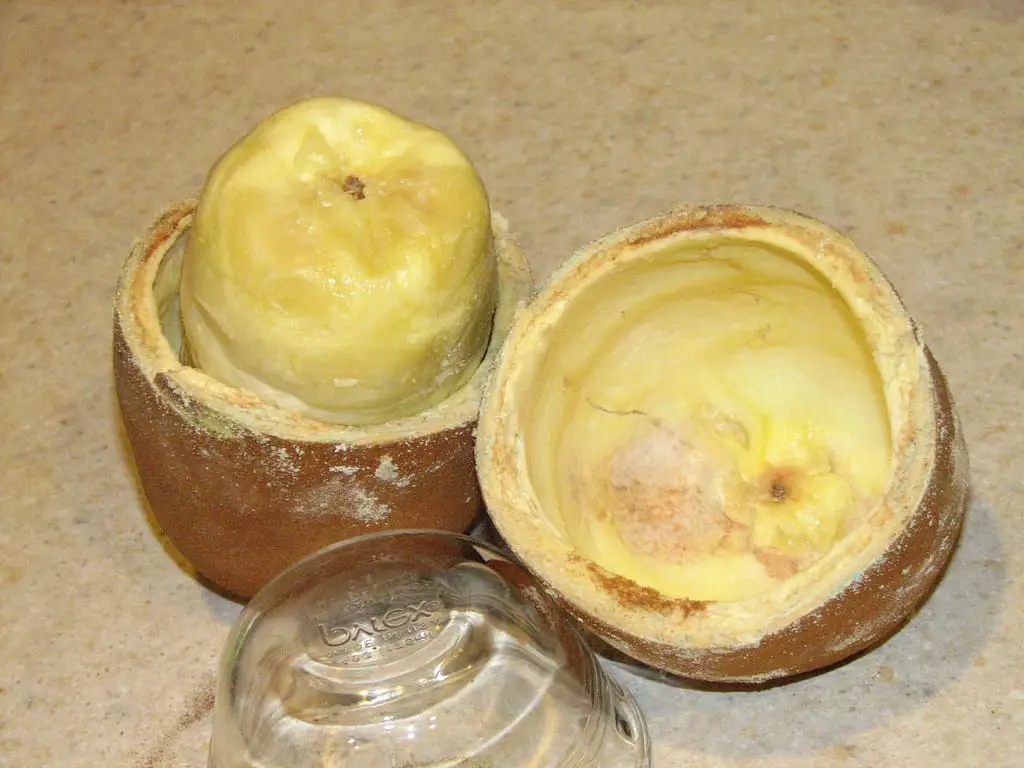
Cupuaçu, also spelled cupuassu, cupuazú, cupu assu, and copoasu is a tropical rainforest tree closely related to cacao. It is commonly found throughout the Amazon basin and cultivated in Colombia, Bolivia, Peru, and the northern regions of Brazil. It is truly one of the strangest fruits ever seen.
Origin-
South America
Taste-
It has a unique aroma which is said to be a blend of chocolate and pineapple. Its taste, however, is more like pear with a bit of banana.
1. Star fruit
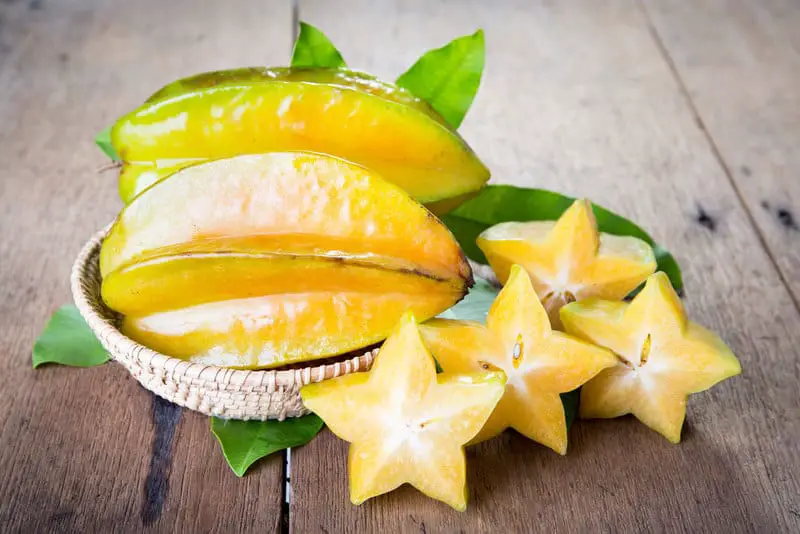
Starfruit is perhaps the weird-looking fruit in the world.
The fruit has distinctive ridges running down its sides (usually five but can occasionally vary); when cut in cross-section, it resembles a star, hence its name.
The entire fruit is edible and is usually eaten out of hand.
The fruit may also be used in cooking and can be made into relishes, preserves, and juice drinks.
Origin-
Srilanka
Taste-
The taste is difficult to match, but it has been compared to a mix of pineapple, apple, guava, grape, and citrus family fruits.
Unripe star fruits are firmer and extremely sour but when eaten with sprinkled salt, it tastes like magic.
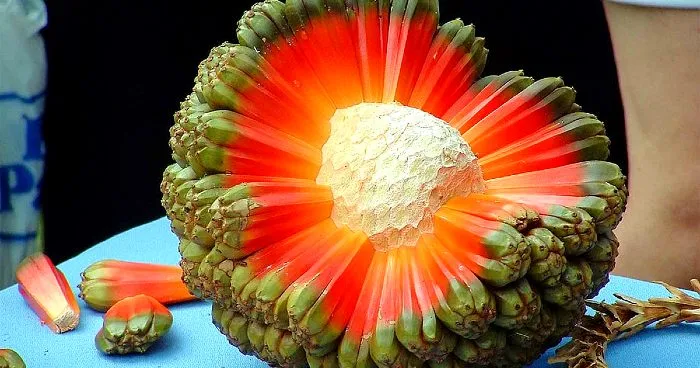
It’s crazy to know that almost all exotic looking fruits can be found in nearby-equatorial regions.